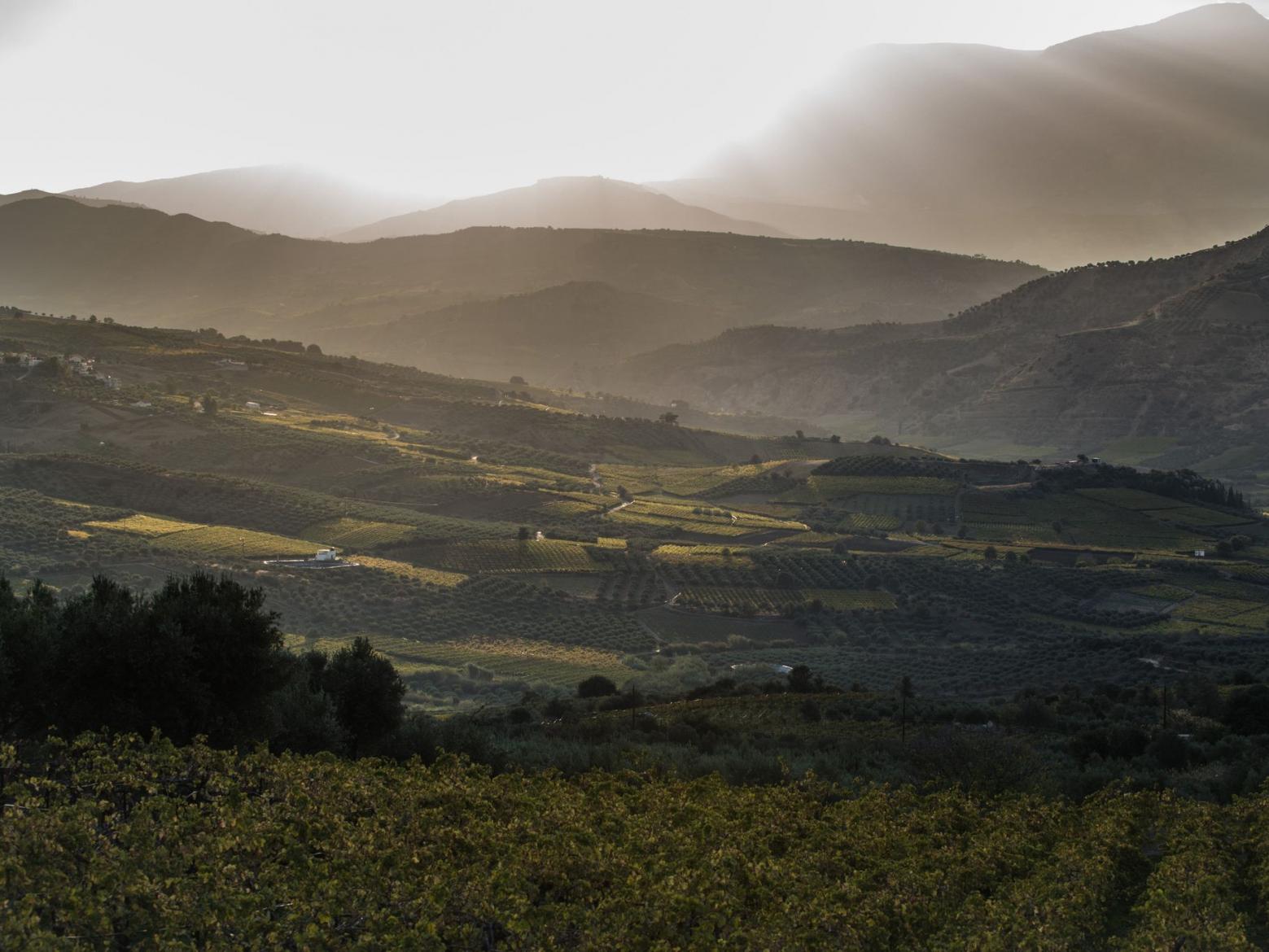Where does Cretan wine stand today?
By Yiannis Karakasis MW
I recently found myself in Heraklio on a whirlwind visit for the Oinotika event. I wanted to see, or better listen to, the 36 producers of the dynamic Wines of Crete and find out what is happening in Cretan wine today. There is no better opportunity than an event of this type, especially when outside Athens. Fewer people, more space for everyone, all you need is to be focused when you taste.
So what did I see? If you expect the author to claim that everything in Crete is made in an ideal way, the wines are perfect, and the producers make wines of Chateau Margaux class and above, you must be confused or read the wrong blog. Crete, for many years, had problems with highly oxidised wines, often from the very start. But, over the past 10-15 years, people showed faith in their place and their varieties and tried to rewrite the Cretan wine narrative. I believe this was managed very successfully, taking the island and its wines to the forefront.
The changes have been drastic in recent years. Vidiano (approximately 200 ha) took the place of Vilana (about 300 ha) as the star white variety (qualitatively speaking), and the forgotten or lost for many years Liatiko (about 400 ha) made an incredible comeback. Together with these, a series of other white Cretan varieties, that I call “satellite varieties”, such as Thrapsathiri, Dafni, Plyto, Melissaki and Tahtas (read below for more), supplemented the island's wine puzzle. Alongside the whites, the reds also achieved a better place, the troublesome and often rough Mandilari, the elegant Kotsifali and the almost forgotten Romeiko. If I could charge this plethora of varieties with something, it would be that they all entered the conversation simultaneously. Nevertheless, if I get into that, I will miss the point. And, I very tactfully left out Muscat of Spinas, a clone of Muscat à Petits Grains, planted in a few acres in Spina, and the cosmopolitan varieties Grenache, Roussanne, Syrah, Mourvedre, which are a chapter on their own in the Cretan book.
To the point, Yiannis! Where does Cretan wine stand today? I would say at a very good point and clearly on an upward trend. It is evolving. The taste I was left with was more than positive. The wines exceeded my expectations, although some have remained stagnant to a lesser degree. But, the general picture was exciting, with novel work carried out on all varieties, newer approaches with a lighter touch that produces contemporary and authentic wines. Even for the reds? There is freshness, elegance, and refinement even with the reds. Of course, eliminating heavy barrel use and over-ripeness is a work in progress. But, I am sure that it can be achieved if it is desired.
Most exciting wines tasted:
Cretan Varieties
Dourakis Apus Romeiko 2021 (blanc de noirs version, but it will also soon come in an exciting traditional Marouvas version). Just a note here, I found all four of the producer's Romeiko wines simply unique and delicious.
Αlexakis Vidiano Orange 2020 (skin contact, intense but also elegant approach).
Kourkoulou Vidiano 2021 and Klados White Diva Vidiano 2021 (both well made and charming wines)
Zacharioudakis Vidiano 2020 (oaky, balanced style)
Silva Enstikto Vidiano 2020 (a fat and fresh interpretation of Vidiano)
Paterianakis Vidiano 3.14 2021 (natural and delightful expression of the variety)
Karavitakis Vidiano Single Vineyard 2018 and Liatiko Indigenous Yeasts 2018 (fascinating efforts that impressed me by their purity and precision)
Efrosini Mikri Evgeniki Vidiano 2020 (stylish wine with dense fruit)
Boutari Scalarea 2020 (Vidiano – Athiri an exciting and unique blend)
Amargiotakis Thrapsathiri 2020
Idaia Ocean Thrapsathiri 2020 (classy with lovely acidity and power)
Theros Plyto-Thrapsathiri 2021 (new and promising entry)
Douloufakis Tachtas 2020 (the revival of a forgotten Cretan variety). Read more in my Instagram account.
Diamantakis Petali Assyrtiko (effortless and precise)
Strataridakis Muscat of Spina (charmingly aromatic, top expression of Muscat)
Manousakis Romeiko (a mineral style that can age, made from very old vineyards of the Chania region)
DAF Wines Liatiko 2018 (limited edition Liatiko with intricate style)
Agelakis Takimi Kotsifali Amphora 2019 (one of my highlights, savoury and perfumed)
Gavalas Kotsifali (a duet with the fine Mandilari)
Lyrarakis Kotsifali Karnari 2017 (Kotsifali in a Marouvas style)
Haralabakis Rose 2021 (Kotsifali-Mandilari)
International Varieties
Minos Miliarakis Unoaked Mourvedre 2019 (pay attention to the term unoaked as an example of what I wrote above)
Agia Triada Tzagarolon Trebbiano (an unexpected surprise)
Manousakis Nostos Grenache 2017 (the pioneer of Rhône varieties is continually evolving)
Let me end this post on a sweet note. Or two, to be precise. A 2013 Melissaki Gerodeti by the Lyrarakis and a historic 1996 Liatiko from Douloufakis, two wines I had the privilege of tasting, which show how well the Cretan wines age.





